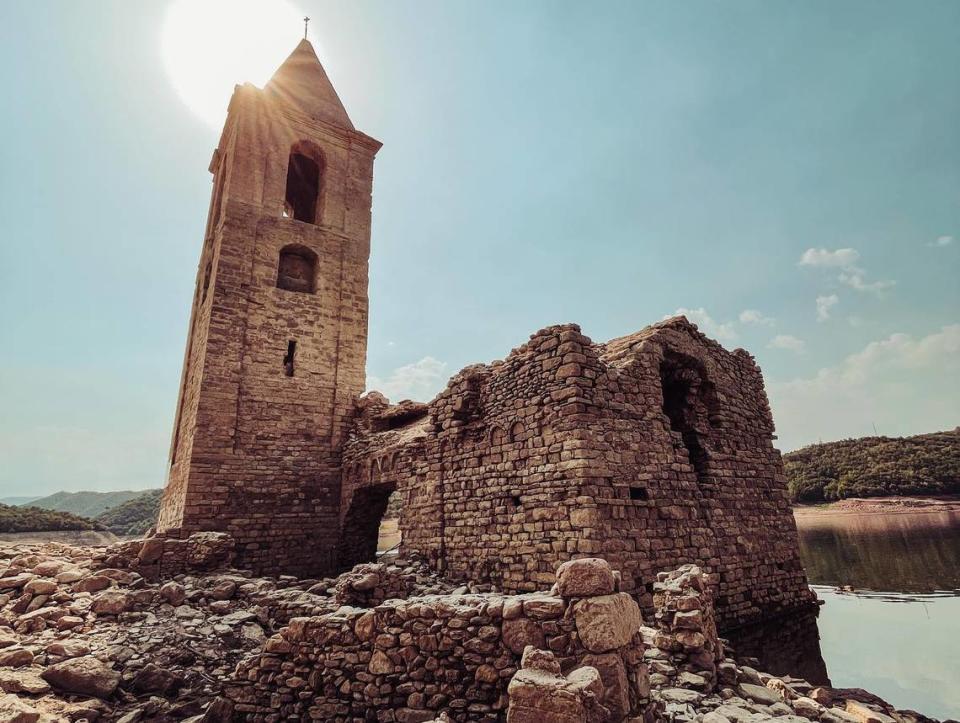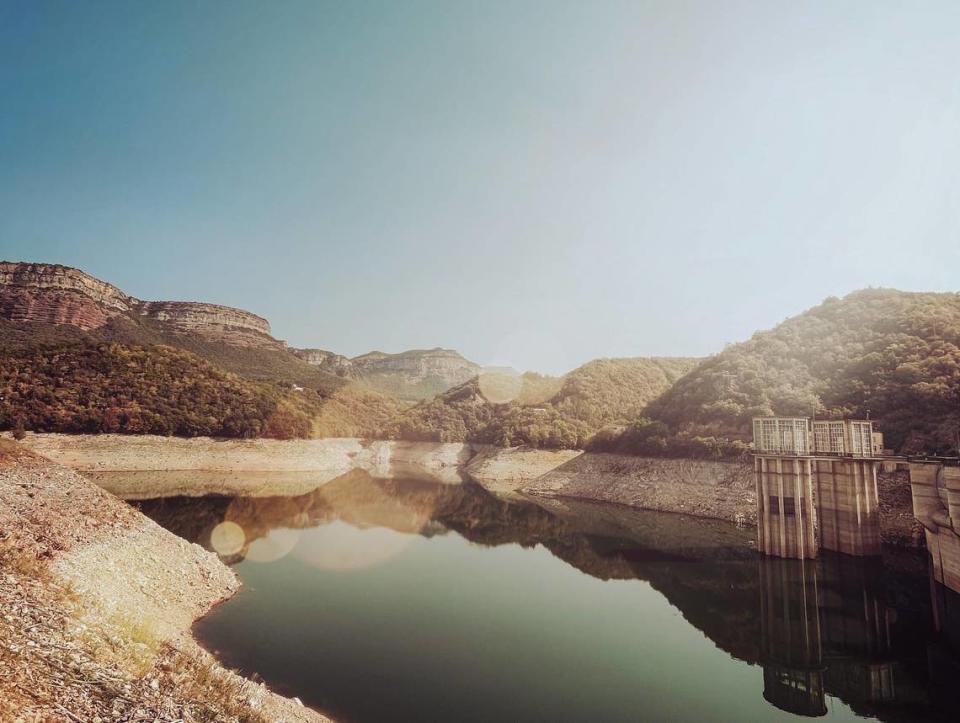Crumbling 11th century church emerges from its watery grave in drought-stricken Europe
The remnants of an 11th century church resurfaced as Europe’s ongoing drought sapped water levels in a reservoir in Spain.
For a thousand years, daily life hummed along in the village of Sant Romà de Sau, about 60 miles northwest of Barcelona, Spain, Atlas Obscura reported. That all changed in the 1960s.
Villagers gathered their belongings, collected their valuables, exhumed their dead, and left, Atlas Obscura recounted. A nearby dam filled their absence — and entire village — with a water reservoir.
But not in August, AFP reported.
The Church of Sant Romà resurfaced from its watery grave, photos from Kylie Sabine Photography on Aug. 15 showed. The church’s bell tower — a 3-story structure of gray cobblestones — appears worn but resolute. In contrast, the rest of the building extends toward the water, crumbling. Straddling dry land and lapping waters, the ruins visibly mark the village’s last resting place.

Spain’s water reservoirs dropped to 36% capacity during August, AFP reported, citing government statistics. When the reservoir is full, the Church of Sant Romà sits about 75 feet below the water, Think Spain reported.

Months of below-average rainfall and above-average heat have brought 47% of Europe into drought warning conditions and 17% into drought alert conditions, according to the European Drought Observatory. Human-induced climate change has amplified the duration and intensity of the drought — making it Europe’s worst drought in 500 years, CNBC reported on Sept. 1.
Consequently, “nearly all of Europe’s rivers have dried up to some extent,” BBC reported on Aug. 24, citing an EU report. Pieces of history — “hunger stones,” Roman ruins, and “megalithic monuments” — have surfaced in parched waterways.
Europe’s drought is far from over with hot and dry conditions likely to continue until November, CNBC reported. Drought conditions are expected to worsen in at least 14 countries, including Belgium, France, Germany, Hungary, Italy, Luxembourg, Moldova, the Netherlands, northern Serbia, Portugal, Romania, Spain, Ukraine and the U.K., the outlet reported, citing an EU report.
Ancient city with ‘massive’ palace emerges from lake in drought-stricken Iraq
Roman ruins reappear from river in drought-stricken Europe almost 2,000 years later
Ancient site — with a mysterious purpose — emerges from dry lake in Europe’s drought

